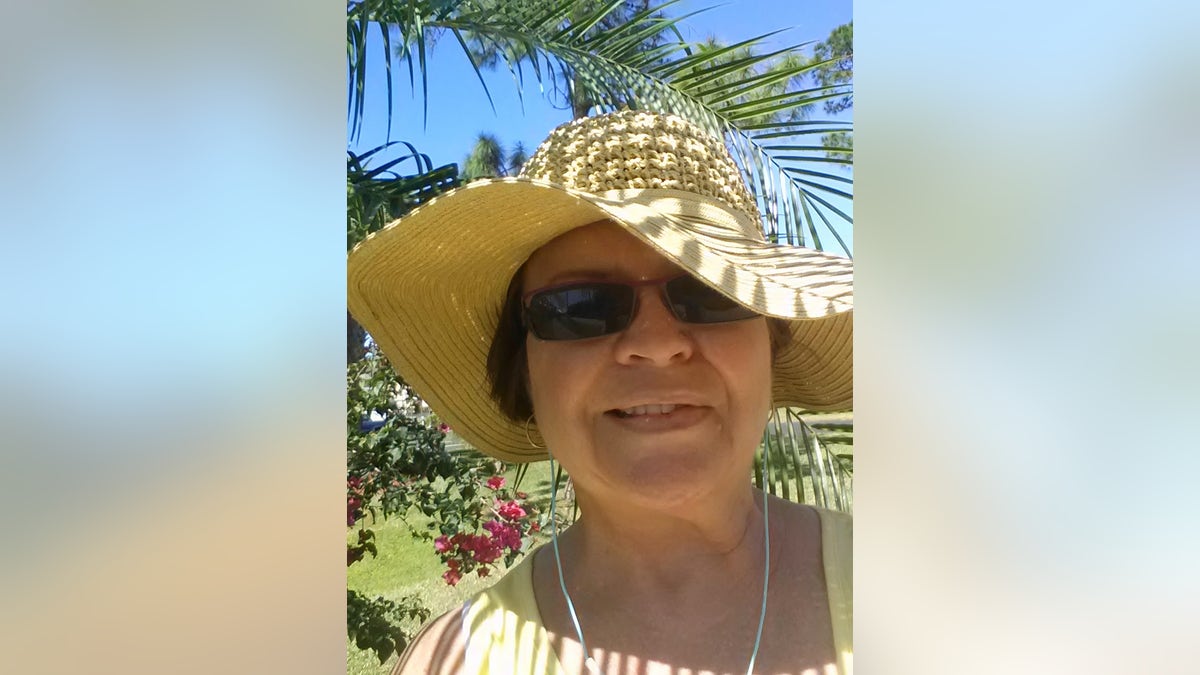
Kathy Mancuso (image courtesy subject)
Kathy Mancuso, 61, of Massapequa, New York is no stranger to skin cancer.
Since 2013, she has had skin cancer five times. The first one: a basal cell carcinoma on her arm.
“When I got that call, I actually cried because hearing the word ‘cancer’ scared me. Now it seems like I hear it too much,” she said.
Mancuso had always been vigilant about going to her dermatologist for full-body skin exams, especially because her mother had been diagnosed with basal cell carcinoma and her sister with melanoma when she was 18. Both women are cancer-free today.
Yet what she thought she should be looking for— moles that change color or have irregular borders, for example— turned out to only be a few of the signs of skin cancer.
In fact, when she brought her mother to the doctor, she realized that scaly skin lesions could turn out to be cancerous too.
And when one showed up on her face, she brought it to her doctor’s attention.
“When I went to the dermatologist and he looked at it, he said ‘No, that’s just a wart. It’s nothing [but] we’ll keep an eye on it,’” Mancuso recalled.
When the legion started to get itchy and bleed, Mancuso returned to her doctor and urged him to do a biopsy. The results showed that she once again had basal cell carcinoma and she needed Mohs surgery to remove it.
Then in July 2014, Mancuso was again diagnosed with skin cancer, this time, twice in a matter of weeks. One was a squamous cell carcinoma on her knuckle, which Mancuso found herself, and an infiltrating basal cell carcinoma on her shin, which her doctor spotted.
The next year, Mancuso raised concern about another lesion on her face. Yet when her doctor looked at it, he said it was an overgrowth of cells and used a treatment to freeze off the lesion.
When it came back, however, Mancuso went for a second opinion. Although her doctor and his physician’s assistant agreed that it was an overgrowth of cells, Mancuso pushed them to do a biopsy. Once again, it turned out to be basal cell carcinoma.
This time however, the cancer had spread deep down into the muscle below her tear duct.
“I could have easily ignored it and that scares me because then if it could have gone into the eye, then I would have had a serious problem,” she said.
Although her doctors agreed to do the biopsies, Mancuso said she often felt that she had to persuade them do so.
“I kind of expected that they would just see with their magic glasses [and] they would know when something was not right. But that wasn’t the case,” she said.
Skin cancer doesn’t always follow ‘the rules’
Skin cancer is the most common type of cancer in the United States— one in five people will develop it in their lifetime.
Experts say however, that it’s often overlooked.
One of the reasons might be that although there are early signs of skin cancer, they don’t always meet the exact criteria for doctors to make a diagnosis.
“There are some times when skin cancer doesn’t go by the rules,” said Dr. Kristin M. Baird, founder and medical director of the Dermatology Center of the Rockies in Longmont, Colo. and an assistant clinical professor of dermatology at the University of Colorado.
What’s more, approximately 90 percent of providers said they had seen patients whose skin cancer was misdiagnosed or overlooked by a non-physician, according to survey by the American Society for Dermatologic Surgery.
Although doctors would never think twice about doing a biopsy on a spot they suspect is skin cancer, they may be apprehensive if it’s on a highly visible area like the face, Baird, who is also a contributor for RealSelf, said.
“We do often know when something just isn’t right,” said Cindy Pearson, executive director for the National Women's Health Network in Washington, DC. “In those cases both men, women and parents of children can and should be advocates for a trained professional to slow down, listen and take another look,” she said.
Patients are always their best advocates, but persuading a doctor to re-consider a diagnosis can be challenging because of the power differential.
Women in particular, may feel hesitant to speak up and challenge their doctors.
“On average, women listen more [and] they’re less likely to interrupt. They’re also more likely to use a social nicety phrase or a social lubricant phrase which is slightly denigrating themselves,” Pearson said.
Nevertheless, experts agree that all concerns should be taken seriously by their physicians and patients should remind themselves why they’re advocating for themselves in the first place.
Although skin cancer can be hard to spot, one of the best ways to detect it early is to see a board-certified dermatologist for a yearly fullbody skin exam in addition to at-home self-exams. Use a mirror for hard-to-see areas and take pictures to keep track of changes, Baird said.
Although her doctor missed the cancers, Mancuso continued to return because he always listened to her concerns.
Today, Mancuso is diligent about wearing sunscreen and a hat every day, getting regular screenings and doing self-checks every day, but she can no longer enjoy the things that used to bring her joy like taking a walk on the beach or going for a swim in the pool.
Although she admits she’s worried about getting skin cancer again and knows that she’s also at an increased risk for other types of cancers, she refuses to let fear get in her way.
“I’m proud of myself for taking control. I will not be a victim,” she said.
